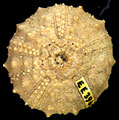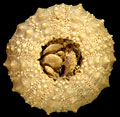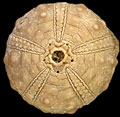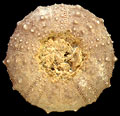The Echinoid Directory
Glyphopneustes Pomel, 1869, p 40
[ =Coptophyma Peron & Gauthier, 1879, p. 209 (objective)]
| Diagnostic Features |
|
|---|---|
| Distribution | Cretaceous (Cenomanian - Maastrichtian), North Africa and the Arabian Peninsula. |
| Name gender | feminine |
| Type | Goniophorus problematicus Cotteau, 1880, p. 121, by monotypy. |
| Species Included |
|
| Classification and/or Status | |
| Remarks |
|






